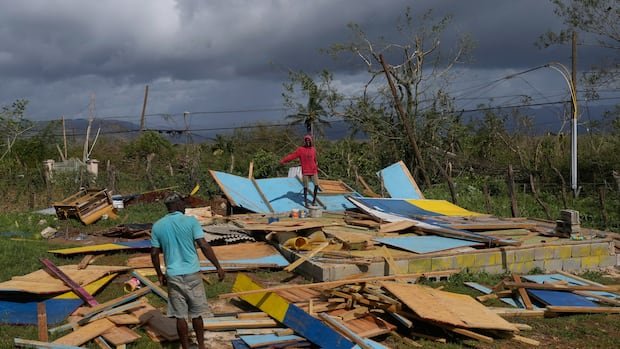Jamaica has been focusing on enhancing its financial preparedness for natural disasters over the past decade. Following the devastation caused by Hurricane Melissa, the country’s strategic efforts may prove to be beneficial and could serve as a blueprint for other nations susceptible to climate-related risks.
In a proactive move last year, Jamaica issued a catastrophe bond worth $150 million US. This bond is designed to be activated under specific hurricane strength and path criteria. Florian Steiger, CEO of Icosa Investments, explained that the bond’s activation is tied to the central pressure of the hurricane upon landfall, with an independent party confirming that the threshold has been exceeded.
The anticipated payouts from the catastrophe bond are expected to reach Jamaica swiftly. In addition to the catastrophe bond, Jamaica has diversified its disaster risk management by holding insurance policies for extreme rainfall and tropical storms through a regional pool that caters to Caribbean nations. Moreover, the country can access lines of credit from institutions like the World Bank and the Inter-American Development Bank.
According to Conor Meenan, a risk financing adviser at the Centre for Disaster Protection, Jamaica’s disaster preparedness strategy is among the most comprehensive globally at present. The country’s Finance Ministry reported having around $820 million US available for post-disaster financing needs, although this amount may not cover the estimated damages resulting from Hurricane Melissa.
Jamaica’s catastrophe bond, issued in 2024 with assistance from the World Bank, was funded by the country itself, with buyers primarily being investment firms from North America and Europe. The bond, maturing in 2027, covers four hurricane seasons and functions similarly to a standard bond if not triggered for a payout.
The uniqueness of Jamaica’s catastrophe bond lies in its trigger mechanism, which is based on the severity of the hurricane rather than the extent of damage. This approach, unlike traditional insurance, focuses on factors like a hurricane’s central air pressure and its path across specific areas.
Despite the potential impact on investors, the loss of $150 million US through the catastrophe bond is considered manageable within the larger market context. Analysts suggest that the catastrophe bond market, predominantly active in wealthier nations like the U.S., presents an opportunity for lower-income countries to mitigate their climate risks effectively.
Jamaica’s proactive financial strategies have drawn attention as a potential model for other climate-vulnerable nations in accessing rapid post-disaster funds. By leveraging various insurance and financing mechanisms, Jamaica showcases a preparedness template for dealing with increasingly severe storms like Hurricane Melissa, exacerbated by climate change.
While catastrophe bonds are not a standalone solution, they can contribute to enhancing global economic resilience and risk-sharing practices. The success of Jamaica’s approach highlights the importance of collaborative efforts in bolstering economies and managing climate-related risks worldwide.


